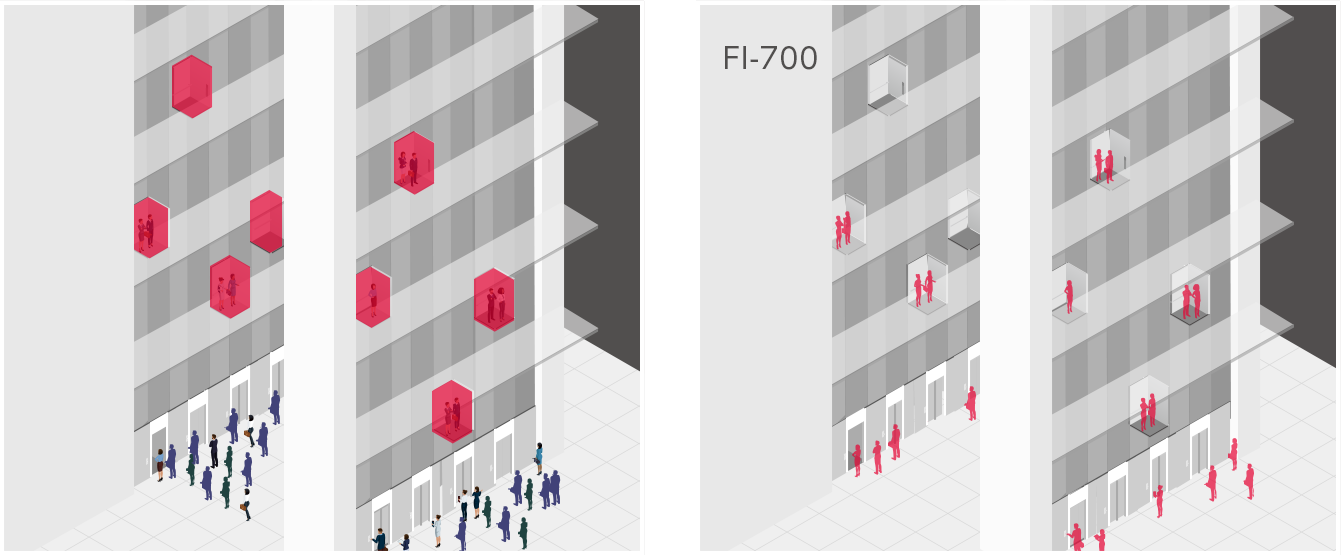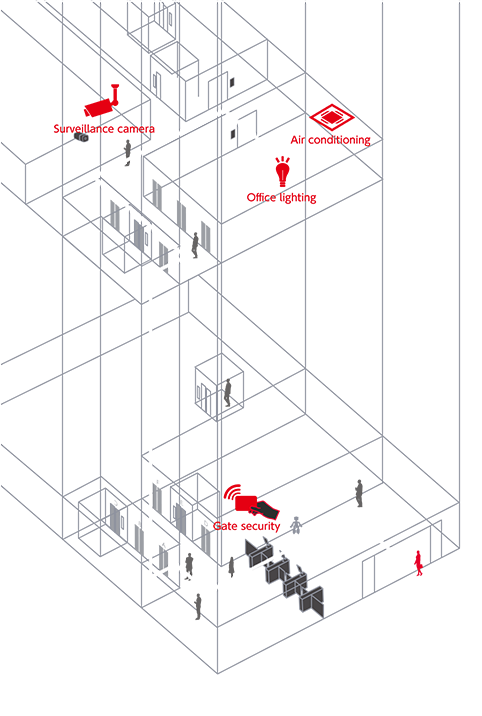Conventional elevator operations management targeted even interval operations. While advancing development, we found that this was not able to react to sudden increases of people, such as during the morning commute, during lunch, or after meetings and seminars where many participants would gather, causing crowds.
People Flow Predicting Elevator Operations Management System FI-700, the latest elevator operations management system, improves on the above-mentioned situation. It is built and controlled based on the expertise in prediction obtained through development of the People Flow Simulator.
The concept underlying it is a shift of thinking from car-oriented thinking to serve cars efficiently to people flow-oriented thinking that designs a smooth flow of people in the building.
"Our goal is to provide a comfortable traveling environment aligned to the unconscious behaviors of each user. Many different kinds of information related to use and operations are stored in a database, and directions can be sent to cars automatically ahead of the users’ thoughts. For example, in Building A, many people rush to the elevators from the 1F entrance at 8:30 am every morning, especially on Mondays. Based on a database containing a record of this, we can have 3 elevators waiting for them every morning, and have 4 elevators on Mondays," said Hatori.
FI-700 predicts the flow of people and reacts to their movements, achieving up to a 20% reduction of waiting time.* In Japan, those were introduced in large cities, and have drawn high expectations.












